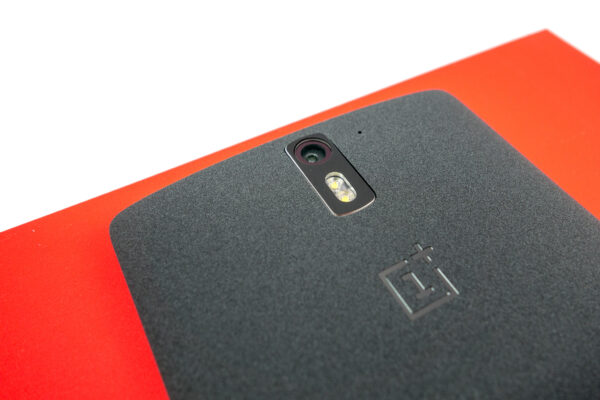
The OnePlus One is an Android smartphone that is really unique in many ways. It has impressive top-notch specifications, carry a rather budget-friendly price tag, and comes from a relatively unknown company that did not exist one year ago. You can’t just buy the phone even if you want one, you need to get invited. Is the One the one for you?
In case you’re unfamiliar, OnePlus is the company, headquartered in Shenzhen, China, and One is their first phone. OnePlus was founded in December 2013 by the previous Vice President of OPPO, another Chinese phone manufacturer which is probably slightly better known, who also brought along a bunch of employees with him. There’s more to the OnePlus OPPO story, but I’ll leave that for another time. You are more interested in the One right?
The One was announced in April 2014. It was too good to believe. It had the best hardware specifications at that time, and yet sell for just US$299 and US$349 for the 16GB and 64GB models respectively. That’s even cheaper than the Google Nexus 5, which was then already regarded as rather cheap. It even looks good. Simple but elegant design.
The One will run CyanogenMod, a popular open source community developed Android distribution based on the Android Open Source Project (AOSP). While users of other Android smartphones have to struggle, at least to some extent, to replace their default software with CyanogenMod, One users will have it preloaded.
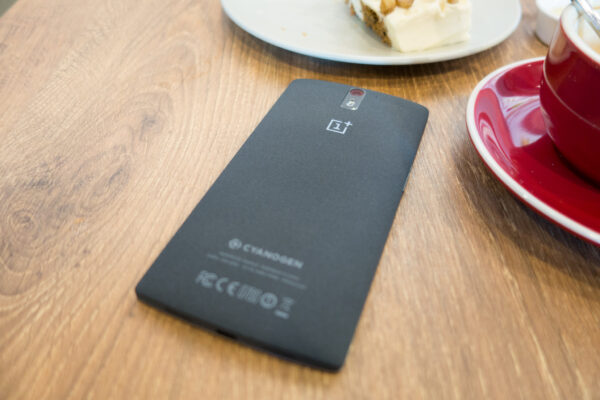
Is there a catch? There didn’t seem to be any. In fact, OnePlus’ mantra is NEVER SETTLE. You don’t have to choose between price, hardware specifications, and design. You can have all of them. But wait, there is a catch. You can’t just buy it. You need an invite. OnePlus couldn’t produce their One fast enough, so they needed the invite system to manage sales.
Fast forward, OnePlus will finally open up the One to preorders on 27 October 2014. No, you still can’t plonk down your money and get the phone right-away. You join a preorder queue. You also have only one hour, starting at 12 noon GMT, to join the queue.
Let’s get on with the review.
Unboxing The One
Unboxing any new gadget is always an exciting exercise for many gadget folks. The One makes it especially so. It’s not the brown box that the One is packed in. No, there’s another box inside. The USB charger does get boxed separately.
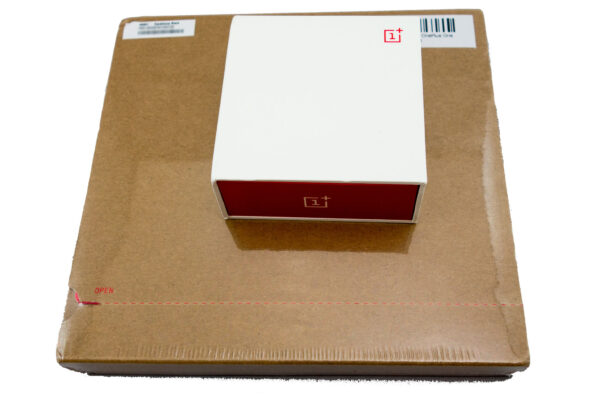
Inside the brown box is the actual box for the phone. Nano SIM adapters, as you can see in the photo below, were included in new shipments starting some time in October. It’s a small little thing that makes it easier for iPhone users, and users of other phones that use Nano SIMs, to switch to the One.
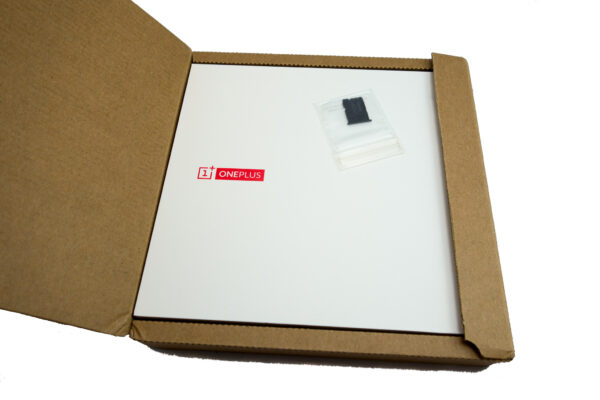
While iPhones, Nexuses, Samsung Galaxies and many other phone boxes have all begun to look quite alike, OnePlus has opted to go with a flat, but very spacious, slide-out-sideways design. It’s pretty, white with red accents, reflecting the OnePlus colour scheme.
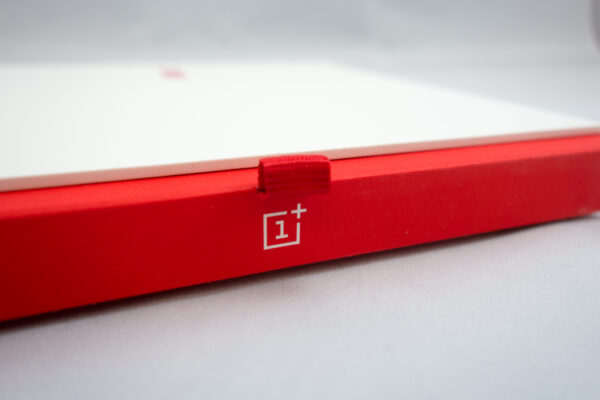
The box, incidentally, is quite hefty. It’s really good quality material. When I first picked up the box, I was surprised by the weight. The phone’s not light, of course, but plenty of weight comes from the box itself.
Slide out the inner red box, open the cover, and behold, the One is revealed inside, neatly held on the left side, with a pull tab to help you lift it out of the recess. The plastic protector covering the One’s screen tells you where the Micro SIM slot is, in case you (like most people) just want to jump right in to start using the phone. There’s a sticker with the IMEI and serial number on the plastic protector too for your easy reference.
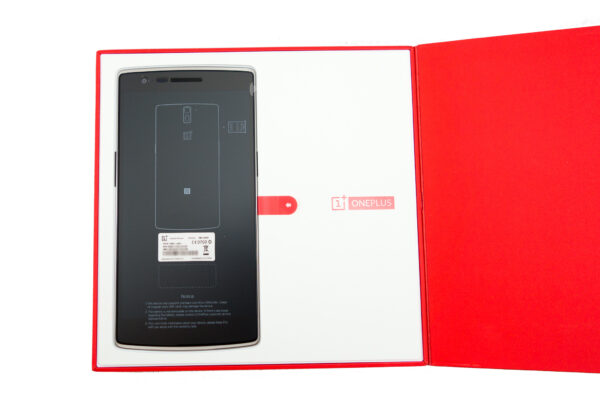
Under the cardboard that holds the phone, you’ll find a nice USB to Micro USB flat-type cable, and a SIM eject tool. The USB connector itself is also the flat kind. The SIM eject tool comes with its own sleeve so that, hopefully, it wouldn’t get lost so easily. See, even Apple didn’t think of that.
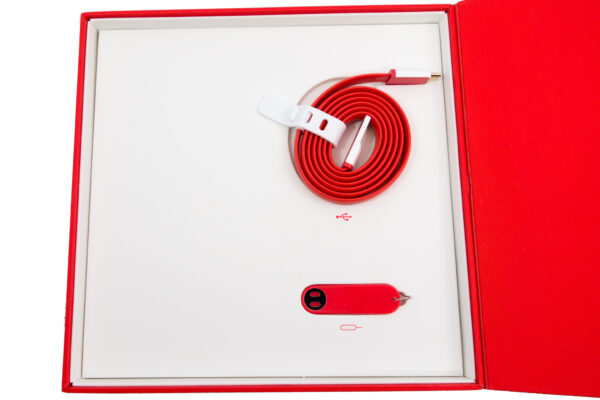
The USB charger is in the other box. It’s also beautifully designed.
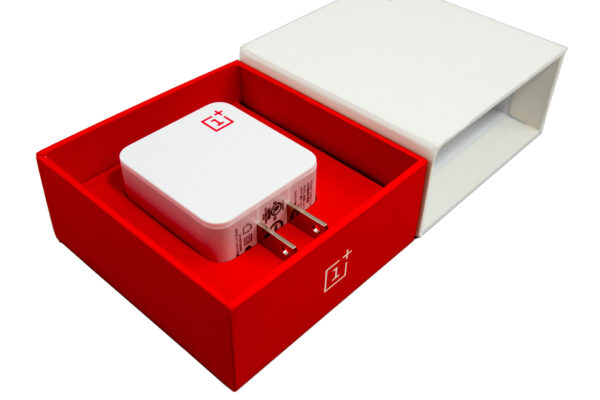
OnePlus has elected not to include any manuals. Not even any useless pieces of paper. The whole packaging is very minimalistic.
Tour of The One
After unboxing the OnePlus One, it’s time to pick it up. To be honest, the One feels completely different from any other phone I’ve ever picked up. The single biggest reason has got to be the material that the One has on its back cover. I have the 64GB version, which comes in what OnePlus calls Sandstone Black colour, and with the back cover that supposedly feels like sandstone. I’ll come back to it again later.
The face of the One is completely covered by Gorilla 3 glass. The glass face is raised above the sides of the phone, so technically the glass extends right up to and is the edge as well. The 5.5″ LTPS IPS display beneath packs 1920×1080 resolution. That metal trim around the edge, incidentally, is real metal, not some cheap plastic made to look like chrome.
Above the display, there is the 5MP front-facing camera on the left, the ambient light and proximity sensor next to it, and the speaker grill in the centre. The speaker grill is completely flush with the glass surface.
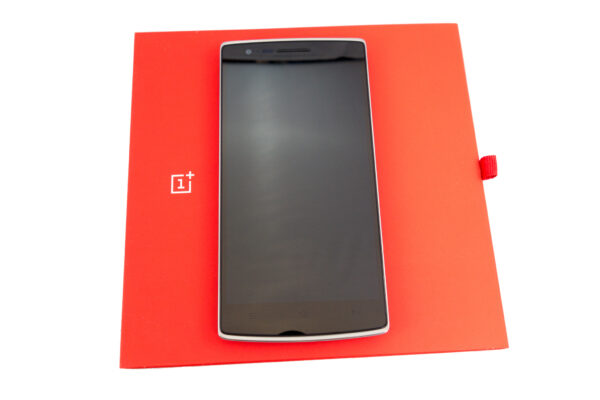
There are there hardware capacitive buttons at the bottom for Menu, Home and the Back keys. I’d much prefer the phone had the Recent Task keys instead of the Menu key. Fortunately, this is a simple customisation option in the CyanogenMod software.
On the left side of the One, there is the volume rocker. Notice the hole? That’s for the SIM-eject tool. The Micro-SIM slot is on the left. You can hardly make it out unless it is pointed out to you. Thank goodness the plastic cover that was on the phone pointed it out, otherwise I might have trouble figuring out where to put my Micro-SIM card.
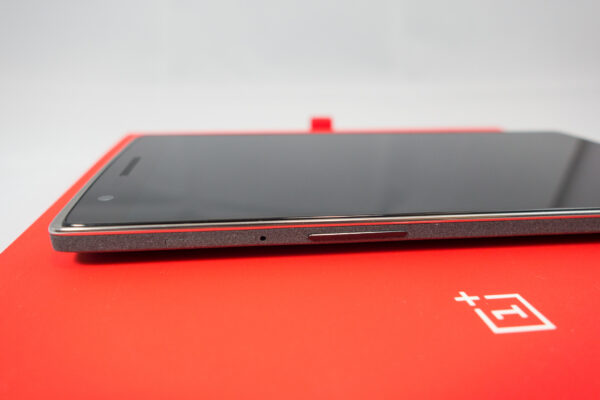
At the bottom, there’s a Micro-USB port. It’s upside-down, like on my Nexus 7, which is a little bit annoying to me. Why can’t they just make the port right-side-up? There’s a small hole on the right for the main microphone. There are two sets of speaker grills for the dual speakers. There may be two speakers, but the sound is still mono.
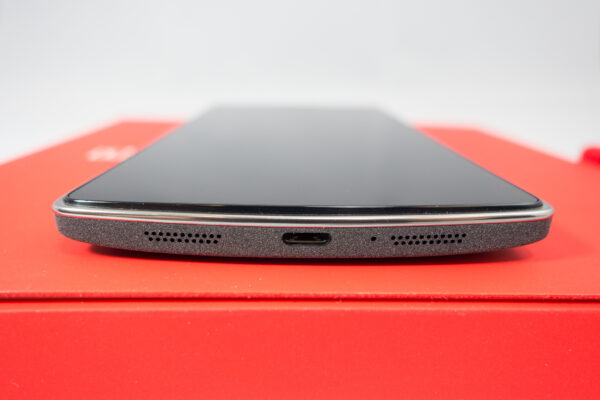
The two speakers offer quite good volume output, better than other phones I’ve had, such as my previous Samsung Galaxy S4 and HTC One X. The sound quality, however, isn’t so great. There’s some rasping, scratchy, timbre to the sound.
You’ll find the power button on the right side.
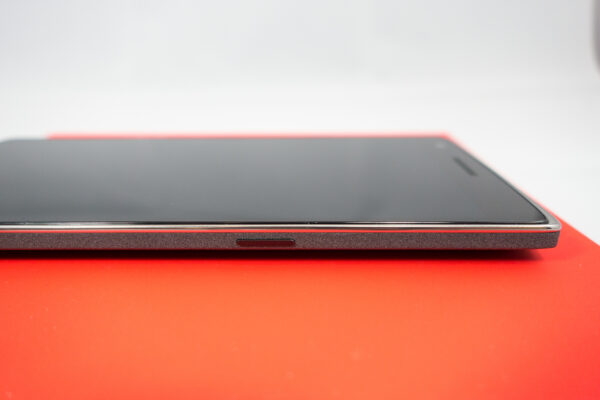
At the top edge of the One, you’ll find the 3.5mm audio jack and a small little hole for another microphone. This microphone serves to pick up ambient sounds for noise cancellation.
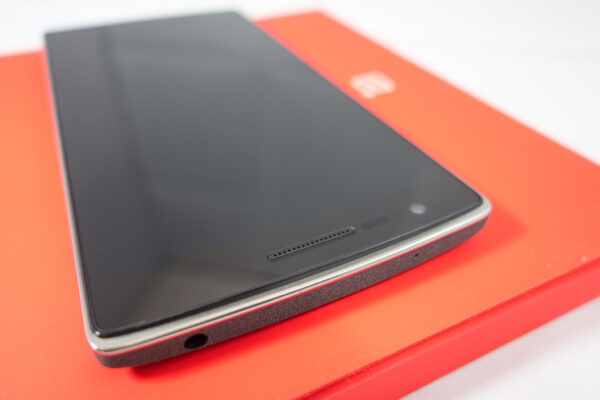
Turning to the back, you’ll find the main 13MP camera with 6-element lens and f/2.0 aperture. The dual LED flash is beneath the camera. You can also make out the third microphone on the right of the camera. The back is also the only place anywhere on the phone you can find any kind of branding: the OnePlus logo near the top, and the Cyanogen logo near the bottom.
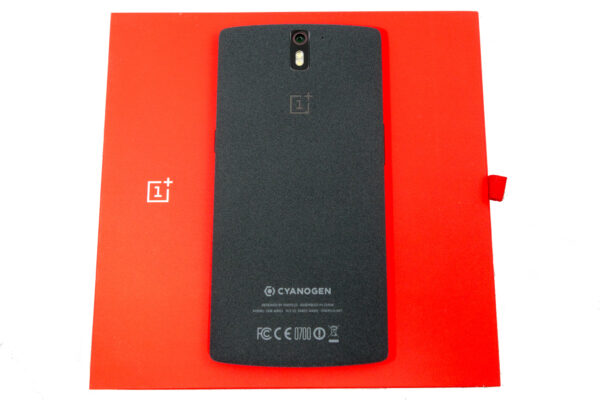
I love that the One doesn’t have any brand marking on the front of the phone. I’ve always wondered why other manufacturers like Samsung, LG, or Sony, feel the need to put the brand on the front. If it’s my phone, surely I know what brand and model it is. Isn’t it more useful, marketing-wise, for the brand to be on the back of the phone, so that other people can see it?
Like how, for example, Apple also only puts their logo on the back of their iPhones?
The back cover of the One is removable, with some effort. The only purpose for doing that is to swap back covers. OnePlus was originally planning to sell what they call StyleSwap Covers, but they seem to have put that on hold for now.
The 3100 mAh battery in the One is not replaceable, and there is no microSD slot to expand memory. With 64GB of internal storage, there’s little need for microSD expansion anyway.
The Sandstone texture on the back of the One is totally unique. It feels really good. It’s rougher than velvet, but certainly not as much as actual sandstone would be. The material is really nice, and the texture helps ensure that the One wouldn’t slip out of your hands so easily.

Its 5.5″ display makes the One relatively large at 152.9 x 75.9 x 8.9 mm, and weighs 162 g. It’s not thick, and the tapered edges does give itself to a sleeker profile. The slight curve also makes the One more comfortable to hold.
The One is too large, at least for me, to be able to use entirely with just one hand. If there are UI elements I need to reach at the far end of the display, even with some delicate shifting of the phone in my hand isn’t going to work.
Under The Hood
The One is powered by a 2.5GHz quad-core Qualcomm Snapdragon 801 processor with an Adreno 330 GPU. It packs 3GB of RAM. When the One was announced in April 2014, this was truly top-class. Six months later, unfortunately, the Snapdragon 805 has overtaken the lead, powering newer phones like the Samsung Galaxy Note 4 and Nexus 6.
The Full HD 1920×1080 resolution display is likewise also top-class in April 2014, but the second half of 2014 has seen introduction of numerous 2K displays. However, with a pixel density of about 401 ppi, the One’s display is still plenty sharp.
The One supports cellular radios up to LTE with 150/50 Mbps download/upload. It has Wi-Fi 802.11 a/b/g/n/ac, Wi-Fi Direct, and DLNA. It also has Bluetooth 4.1 and NFC. The One supports both GPS (with A-GPS) and GLONASS.
The 13MP main camera supports video recording in 2160p@30fps, 2160p@24fps, 1080p@60fps, and 720p@120fps (slow motion). The front-facing camera is 5MP, and records 1080p@30fps.
The slow ramp up to general availability is proving to be a heavy opportunity cost to OnePlus. At this time, the One can still fight to belong in the flagship category, but it may be relegated to mid-tier class in a couple of months.
For full hardware specifications, you can check out the OnePlus One listing on GSMArena.
Using The One
The OnePlus One has been a very enjoyable phone to use. I’ve been an Android user since the Nexus One, and I’ve used CyanogenMod on my Nexus One too. The software in the One, thus, is familiar to me.
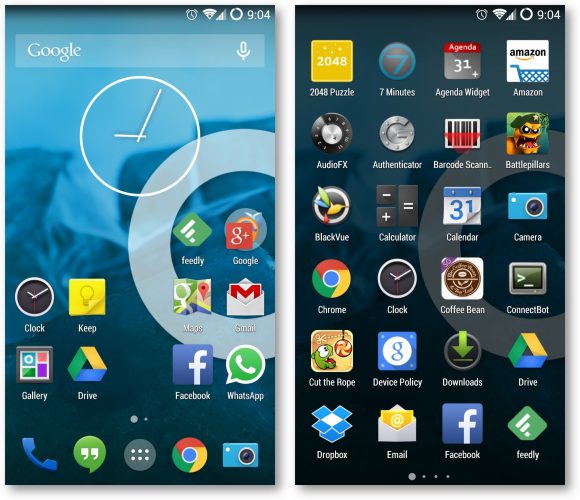
I do think the One is a tad too big. But it’s big screen is really gorgeous. It is brilliant. The whites are so white, I’m beginning to get disappointed with my Retina MacBoo Pro’s display. The 1920×1080 resolution is also plenty sharp enough for my eyesight. I often wonder what is the use of a 2K display in a smartphone. The 1920×1080 in my Nexus 7 is already quite awesome to me.
There’s in fact some good to not have 2K in the One. You’ll need less CPU to drive the graphics rendering, and you’ll use less power for the display. Both will do good for battery life.
The One’s battery life is really good. With my normal usage, from morning till night, approximately 14 – 15 hours, I go from full charge to no less than 60% battery remaining. This includes over one hour of screen-on time, Wi-Fi always enabled, high-accuracy (GPS) location enabled, dozens of messages, Facebook, and a few quick calls. It’s actually alright for me to forget to charge overnight, and probably still last through the next day.
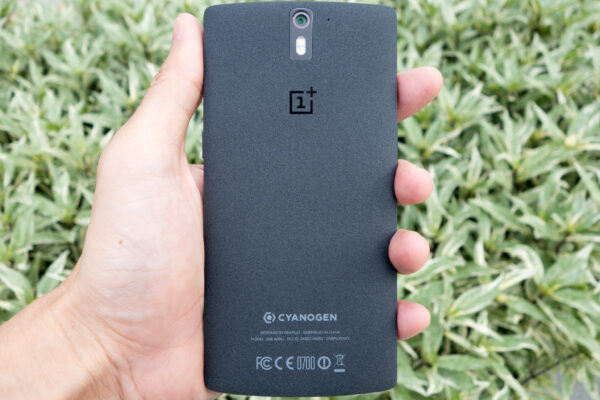
I am particularly picky about fluidity of user interface effects. I can’t find any perfect smartphone. The One isn’t perfect either. But it’s about as good as any out there can be. It has enough processor and GPU power. That said, I don’t play much games on my phone, so my processor performance demands aren’t particularly high.
I do have a small little complaint that the One’s vibration motor is a little weak. The motor is also a little noisy. Fortunately the One’s speaker is loud enough, so that ringtones and notification alarms are sufficiently audible, and thus I’m less dependent on the vibration.
CyanogenMod 11S
OnePlus has partnered with Cyanogen to preload a purpose built version of CyanogenMod, version 11S, for the One. CyanogenMod is very popular in the mod community, i.e., people who modify or use a modified version of the software that runs in their Android phone. The fact that OnePlus embraces open source community software instead of putting in their own flavour of Android makes it very attractive to some groups of users. It also opens up plenty of opportunities for community support beyond that offered by OnePlus.
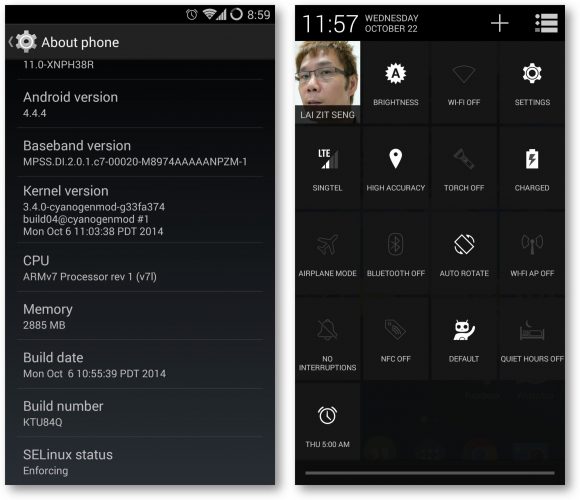
CyanogenMod 11S is based on Android 4.4 KitKat, and at this time has been updated to the latest Android version 4.4.4. OnePlus, together with Cyanogen, has committed to deliver an update to Android 5.0 Lollipop within 90 days of Google’s public release of the source code. OnePlus has also promised 2 years software support for the One (until April 2016).
A key feature of CyanogenMod is its extensive customisability. There are so many things that can be customised to your preference that I could not possibly go through entirely in this review. I’ll highlight a couple of features that I particularly loved.
First, it’s the ability to customise the hardware capacitive buttons. I prefer having the Recent Task button instead of the Menu button. It’s a simple option under Settings, Device – Buttons. In fact, one can disable the hardware buttons altogether, opting instead to use the on-screen navigation soft keys like on the Nexus 5 or Nexus 7. Furthermore, you can customise those on-screen buttons to re-arrange or to add more of them.
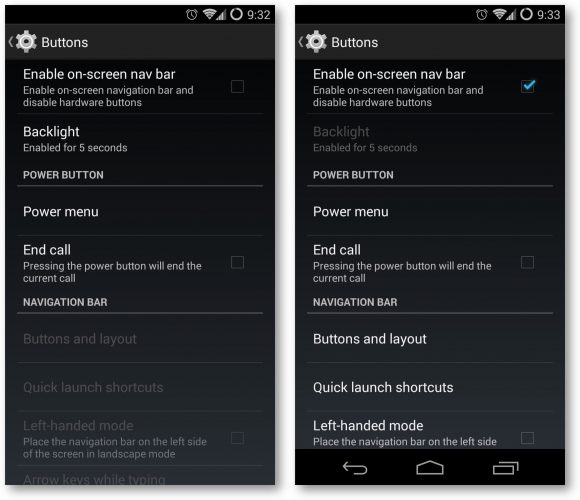
The usual way to wake the One, or indeed most phones, is to press the power button. With CyanogenMod 11S on the One, you can double-tap the screen to wake the device. Then, you can double-tap on the status bar to get it to lock immediately. I actually like the LG G3’s knock code feature, but unfortunately this isn’t something that we can do with the One.
With the screen off, the One will respond to certain gestures. Draw a circle, and the One launches the camera app directly. Draw a V shape, and the One toggles the flash light on or off.
Wrap Up & Conclusion
OnePlus labels the One the flagship killer. In April 2014 when the One was announced, it was undoubtedly the best out there, at least on paper. Six months later, the One is arguably still a great flagship smartphone at any price. Then, when you consider the price, at US$349 for the 64GB model, it’s a great bargain. The One is clearly better value than last year’s Nexus 5. Here, you have a phone with great hardware specifications, beautiful design, and a bargain price. Add to that the CyanogenMod software preloaded. What more could you ask for?
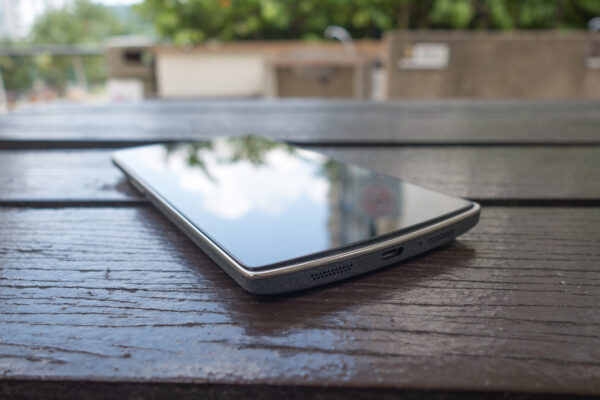
The One isn’t perfect, but it’s only asking you to compromise on little things that are mostly minor, and certainly not deal breakers. Perhaps the biggest issue some people will have is with the 5.5″ display being too big for their comfort.
The fact that you have to receive an invite to buy the One is probably the greatest annoyance of all with this phone. Limited pre-order is set to open next week (more details at the end).
Pros:
- Great hardware specifications
- Design is nice
- Good battery life
- Comes with CyanogenMod software
Cons:
- A little too big
- Need an invite to buy the phone (or limited pre-order)
Pre-Orders Begin 27 October 2014
OnePlus has finally announced the opening of the floodgates for pre-order. It’s only for one hour starting at 1500 hrs GMT, or 11pm Singapore time, on 27 October 2014. Joining the pre-order puts you in a queue. You have to wait in line, and it may take some time before your order is processed and shipped. However, apart from receiving invites, this is the only way to get the One. for now.
5 thoughts on “OnePlus One Review”
View Comment Policy